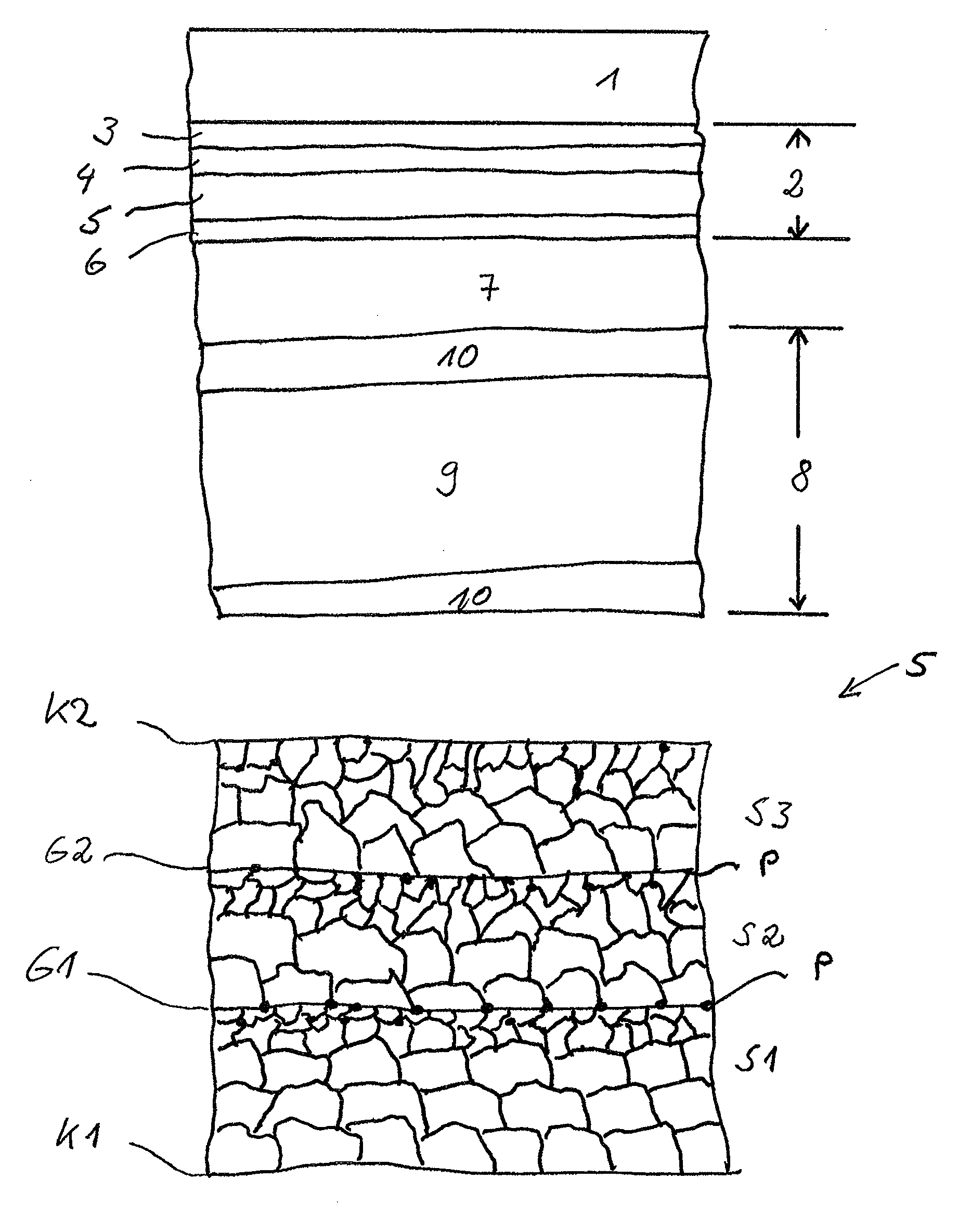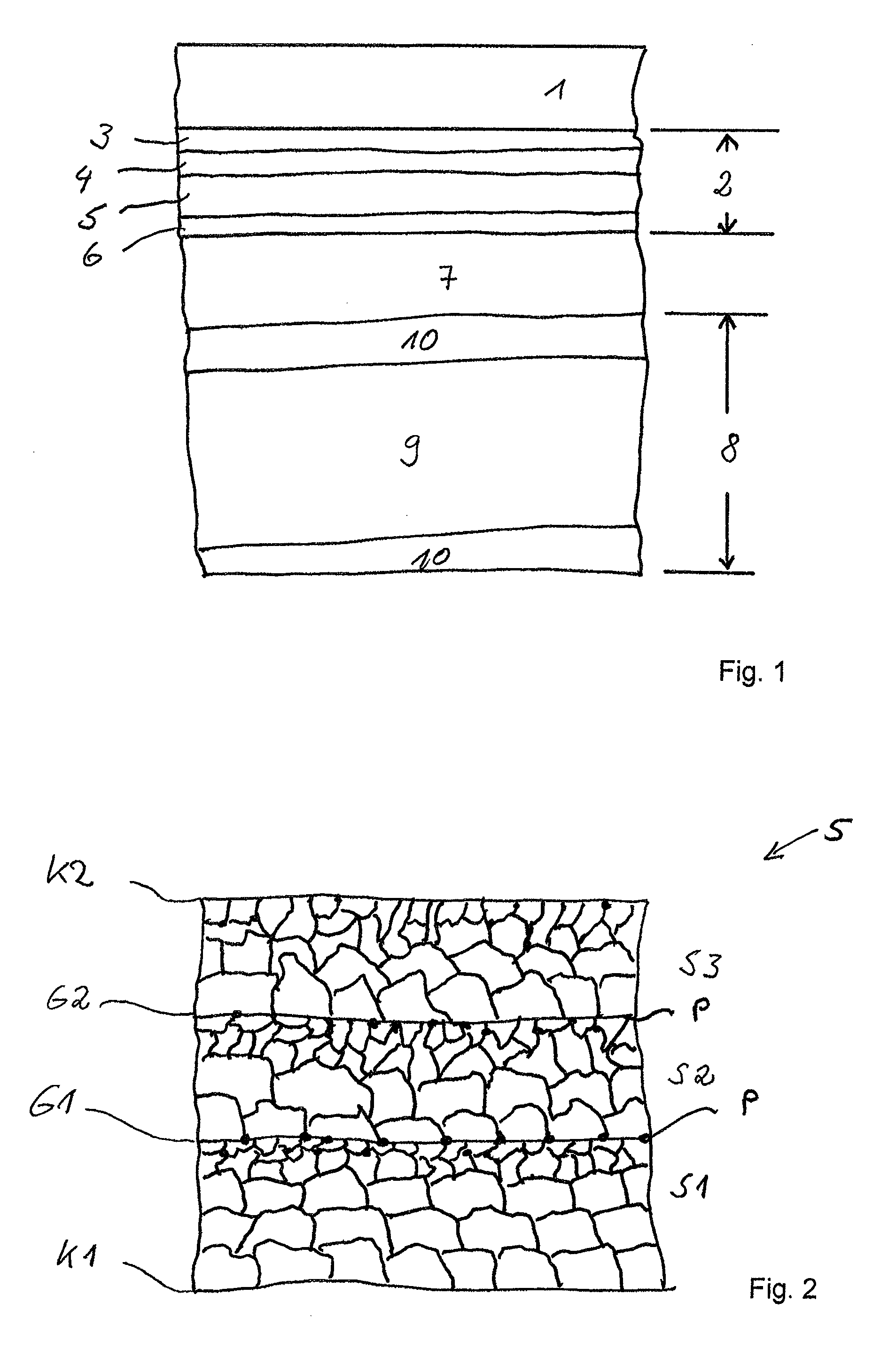Layered chip for use in soldering
a layer chip and metal chip technology, applied in the field of layer metal chips, can solve the problems of weakening affecting the electrical conductivity of the soldering connection, and affecting the mechanical strength and/or electrical conductivity of the soldering connection, and achieves the effects of simple and cost-effective production, good electrical conductivity, and reliable soldering
- Summary
- Abstract
- Description
- Claims
- Application Information
AI Technical Summary
Benefits of technology
Problems solved by technology
Method used
Image
Examples
Embodiment Construction
[0024]FIG. 1 shows a stylized cross-sectional view through a DCB substrate with a chip arranged thereon, wherein a soldering paste is provided between the chip and the DCB substrate. A fixed composite assembly of the chip with the DCB substrate can be produced from such an arrangement by supplying heat.
[0025]In FIG. 1, a chip body, designated generally by 1, is produced from Si, for example. A metallization is provided at one side of chip body 1, the metallization being formed from a layer assemblage, designated generally by 2. Layer assemblage 2 consists of a plurality of sequential metallic layers produced by means of a suitable physical coating method, such as PVD or sputtering. A base layer 3 is formed substantially from Al. A first intermediate layer 4 deposited thereon can substantially consist of a TiW alloy. A soldering layer 5 consisting of a plurality of layers (shown in more detail in FIG. 2) is deposited on first intermediate layer 4. Each of the layers can be produced f...
PUM
 Login to View More
Login to View More Abstract
Description
Claims
Application Information
 Login to View More
Login to View More - R&D
- Intellectual Property
- Life Sciences
- Materials
- Tech Scout
- Unparalleled Data Quality
- Higher Quality Content
- 60% Fewer Hallucinations
Browse by: Latest US Patents, China's latest patents, Technical Efficacy Thesaurus, Application Domain, Technology Topic, Popular Technical Reports.
© 2025 PatSnap. All rights reserved.Legal|Privacy policy|Modern Slavery Act Transparency Statement|Sitemap|About US| Contact US: help@patsnap.com


